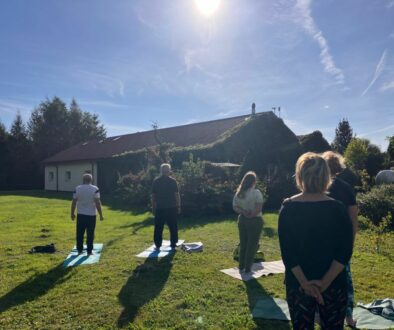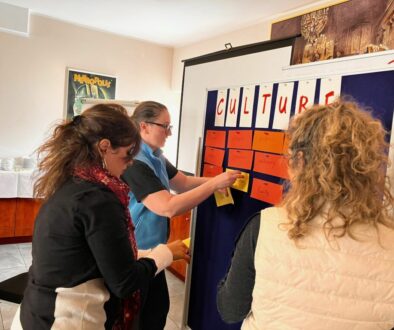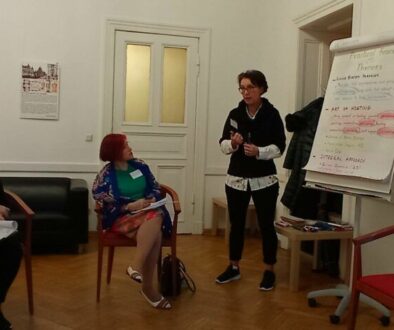Rhythm and Intercultural Communication: Edward Hall’s and John Dewey’s Search for the Aesthetic Experience

“The Warriors…passed the ball six times with so much speed that the defenders helplessly scrambled a step or two behind…. ‘A play where the flow is perfect, the rhythm is perfect,’ (Steve) Curry said. That is how he defined beautiful basketball.” (Branch 2016)
A Personal Note on my article “Rhythm and Intercultural Communication: Edward Hall’s and John Dewey’s Search for the Aesthetic Experience”:
About 14 years ago I was sitting in a restaurant with Milton Bennett. He asked me if I had heard of the theoretical direction Constructivism. I hadn’t. I was a beginner in intercultural communication and everything was new to me. In my training in anthropology I had heard of positivism and of the Critical School in Frankfurt. As an anthropologist, it was probably easier for me to read Ed Hall than for non-anthropologists.
I was also aware of Symbolic Interactionism of George Herbert Mead at the U. of Chicago in the early 20th Century. Later, I learned that Mead was a good friend of John Dewey. Mead, who is sometimes considered the fourth Pragmatist philosopher, had also influenced Jürgen Habermas in Frankfurt considerably. This whole idea of the development of the self through the other—the understanding of one’s own culture through the interaction with the other–originated from Mead.
To keep the story short, Milton recommended a biological work by Maturana and Varela called The Tree of Knowledge, in order to understand Constructivism and embodiment. Embodiment was the term he wanted to introduce to Intercultural Communication as a discipline.
Later in his latest edition of Basic Concepts…, he attempted to introduce Constructivism and Embodiment to our discipline. In the following years, as I was learning more about IC I noticed some interculturalists were using the term interaction, social interaction. I am fairly sure this term came into IC through Mead’s influence on social psychology.
So, I read Maturana and Varela and other books by Varela. Especially with Varela I got really excited. I read his work (with the co-authors Evan Thompson and Eleanor Rosch) The Embodied Mind and I could not put it down. In fact, since then I have read it at least three times. What fascinated me was the embodiment in his work, and his attempt to connect it up with mindfulness in Buddhism. I also read that the authors had been interested in the French philosopher Maurice Merleau-Ponty. Whose main work was entitled Phenomenology of Perception, first published in 1945. (For those of you who may be mystified by this fancy language, phenomenology studies how we as human organisms experience the world.
Experience is the central category. Experience, I later read, was also a central category in the work of John Dewey and William James, who are known as Pragmatist philosophers and wrote from the late 19th century into the 20th century.)
Three years ago, Kazuma Matoba was visiting me and he asked me if I had read The Embodied Mind. My eyes lit up with joy. Kazuma understood the significance of this work also for those of us interested in the meditative experience. Meditation has a lot to do with how we experience the world and how we heal in this world.
Here is a youtube video of Steve Curry, who is quoted at the beginning of my article
As I have now mentioned Kazuma Matoba, now I would like to say something about how he influenced and helped me. Kazuma helped me in various areas. First, he helped me to sustain my interest in Social Constructivism. Second, he introduced me to the Dialogue Process, in the form of David Bohm, Freemann Dhority and Glenna Gerard, as a form of communication training.
The Dialogue Process (DP) seemed to be further along than Intercultural Communication at that time in terms of developing tools for training. I worked with Kazuma in the following years from about 2002 to 2013.
We had both learned a lot from Dhority and Gerard, but I also learned a lot from Kazuma. He was much better than I was in the practicalities of training and workshops. His practice is a good example of the inclusion of embodiment and rhythm, which are major vocabulary in my article “Rhythm and Intercultural Communication…”. I just didn’t think the theory was keeping up with the creativity of Kazuma, Dhority and Gerard.
Evelyn Glennie, the percussionist, who I describe in the section about the seno-motoric in my article
While Kazuma was struggling in the last 10 years with contracts, a house fire, family, correcting papers, etc., I entered retirement three years ago. I finally had the time to focus my total energy on communication theory. Unfortunately, my retirement meant I had to deal with the last stage of my life as a body and mind. So, felt I had to work fast. I had and have the advantage of being an English native speaker, which means I can read English faster than most of you.
English for Kazuma is his third language, my respect. He wrote his habilitation thesis in English and I was the editor. We spent hours and hours together working on his ideas of the Third Culture. In this process I feel I got real insight into how Kazuma thinks. This article I write as a thank-you to Kazuma, Freeman Dhority and Glenna Gerard, for their examples of beautiful training, which I now try to support with theory. Sergej I thank for keeping me up-to-date on systems and jazz improvisation. Our Slovenian and Polish friends I thank for keeping the training exploration going over the years. And I thank George Simon for writing a review of the book in which this article appeared.
Stephen Holmes
You can read and/or download the full article as the PDF Steve article Rhythm and IC 2017 2



